We went to visit Rosazza, a town in the Biella area built by Federico Rosazza Pistolet and Giuseppe Maffei according to the Masonic symbolism well known by the first and ... under the indications provided by the spirits consulted by the second.
di Robert M. Eusebio e Gian Mario Mollar
photos of the authors
The town of Rosazza (BI) is a real stone jewel set in the Cervo Valley. Beyond the undoubted landscape attractions given by the frame of woods and mountains, which alone would be enough to justify a visit, this village holds a secret, carved in the stones and in the architectural structures that compose it. To grasp it, to listen to it voice of the stone, it is necessary to abandon the distracted and superficial gaze of the tourist to immerse oneself in a different state of mind, attentive to the symbolic echoes and traditional references that over the centuries await someone capable of deciphering them.
The decidedly particular configuration of the town is due to the interventions carried out by the mayor and philanthropist Federico Rosazza Pistolet (1813 - 1899) in close collaboration with the painter Joseph Maffei (1821-1901). The two were a truly unconventional pairing. The first, Federico Rosazza, was an eclectic man to the point of being contradictory (after all, an ancient saying holds that only idiots can remain fully consistent). A wealthy son of building contractors, he abandoned his ecclesiastical studies, infatuated with Mazzinian ideas, and joined the Giovine Italia. Over the years, he progressively moved to more conservative positions, eventually becoming Senator of the Republic by royal decree. Belonging to Freemasonry and his more general interest in esotericism led him to revolutionize the architecture of Rosazza to transform it into a symbol of stone. In carrying out this undertaking, he enlisted the help of Maffei, a painter, a veteran of the first war of independence of 1848, with a great passion for Spiritism. Thus it was that a convinced Freemason and layman, Federico Rosazza, became a church builder, and that a painter, Maffei, became an architect.
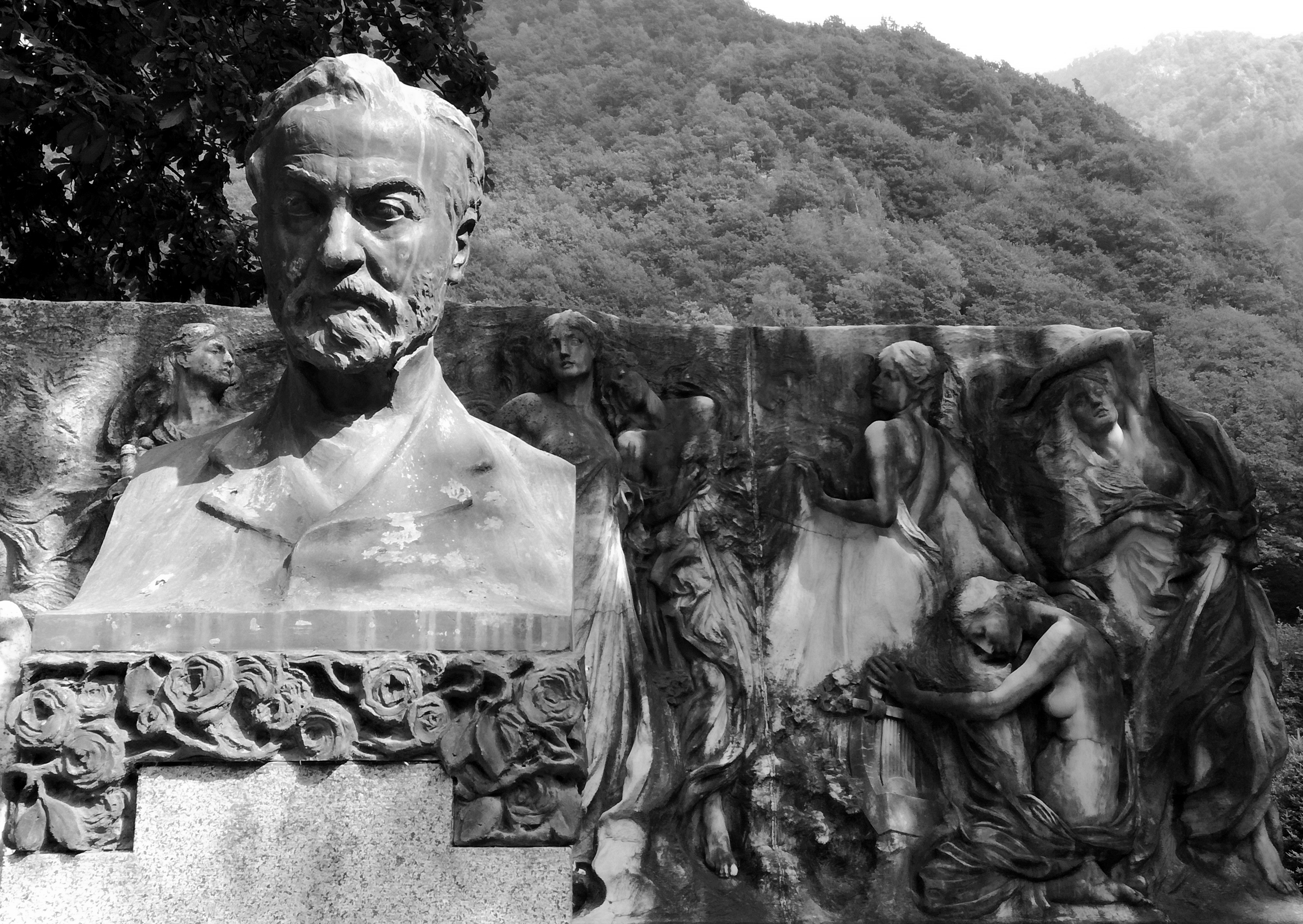
To understand the urban interventions and the symbolic decorations made to the city fabric, it is necessary to refer above all to two currents of thought: on the one hand, Freemasonry, tinged with Templarism and Rosicrucianism with the eclectic taste of Rosazza, on the other, Spiritism, the result of Maffei's frequentation of the Turin salons where this discipline was practiced. Seen with the eyes of contemporaneity, these two currents of thought have very little to do with each other. While Freemasonry represents a codified and documented initiatory path, Spiritism rather, almost instinctively, refers us to cheap superstitions based on wobbling tables, ouija boards and pale mediums that rant by rolling the eyes. In reality, however, due to the nineteenth-century cultural climate, these two cultural phenomena were deeply intertwined.
We will speak profusely shortly about Freemasonry and the “orthodox” esoteric tradition, analyzing the constructions of Rosazza. But first, let us pause for a moment on the spirit aspect, which is fundamental for understanding the unusual constructive dynamics practiced by the mayor and his brotherly collaborator. Indeed, Rosazza is a city literally "dictated by the spirits", in the sense that the details of the architectural constructions were defined with séances with which Giuseppe Maffei spoke to the afterlife. Although all this sounds unlikely and far from common sense, it is not a rumor or a popular legend, but, on the contrary, a practice widely documented in the correspondence between Maffei and Rosazza. The spirits evoked were above all those of Ida, the young daughter of Rosazza who died prematurely in 1864, and of a certain Agostino, companion of Rosazza's youth in the Mazzinian ranks and also deceased, who, in turn, questioned a third spirit again. more mysterious, the Angel of Volterra, perhaps an ancestor of Maffei.

The interventions suggested by the spirits - or presumed as such - and implemented by Rosazza and Maffei were of no small importance:
- In 1874 the cemetery was moved to the left bank of the Cervo river and connected to the town by a bridge with three arches;
- In place of the old cemetery, a new church was built, starting in 1875.
- Subsequently, in 1880, the old church was demolished, saving however the bell tower, which was transformed into a Ghibelline tower.
- In place of the demolished church, a "Palazzina" was built for public use, with Gothic and medieval architecture.
- The town was later scattered with "talking fountains".
The indications - whatever their real source - were not only of a general nature: Augustine's spirit often indulged in details, describing for example the shape to be given to the tap of a fountain, or the correct inclination for the church square. .
As if that were not enough, the work was carried out in great secrecy, because the spirits informed Rosazza and Maffei on several occasions of enemies hidden in the shadows and intent on plotting against the construction of the church and other modifications. It is not clear whether Augustine and the rest of the spirit company were referring to enemies in flesh and blood or rather to adversaries who were also immaterial. In a declaration of the spirit of Volterra, reported by Agostino to Rosazza during a séance, we read: "O Frederick, we have active and secret enemies who work with evil ends and make the mortals who obey them work with evil.". Beyond the phantom threats, it is certain that the works undertaken in Rosazza certainly did not enjoy the favor of the clergy - significant is the fact that the Bishop did not attend the official inauguration of the new church - and not even that of many notables of the area, including Quintino Sella himself. The work was therefore carried out with silence and secrecy, as far as possible, probably arousing some perplexity in the population unaware of the overall project. However, most of the interventions, also demanding from a financial as well as logistical point of view, were personally financed by Federico Rosazza himself, who was a much loved mayor by the citizens of Rosazza for his philanthropy.
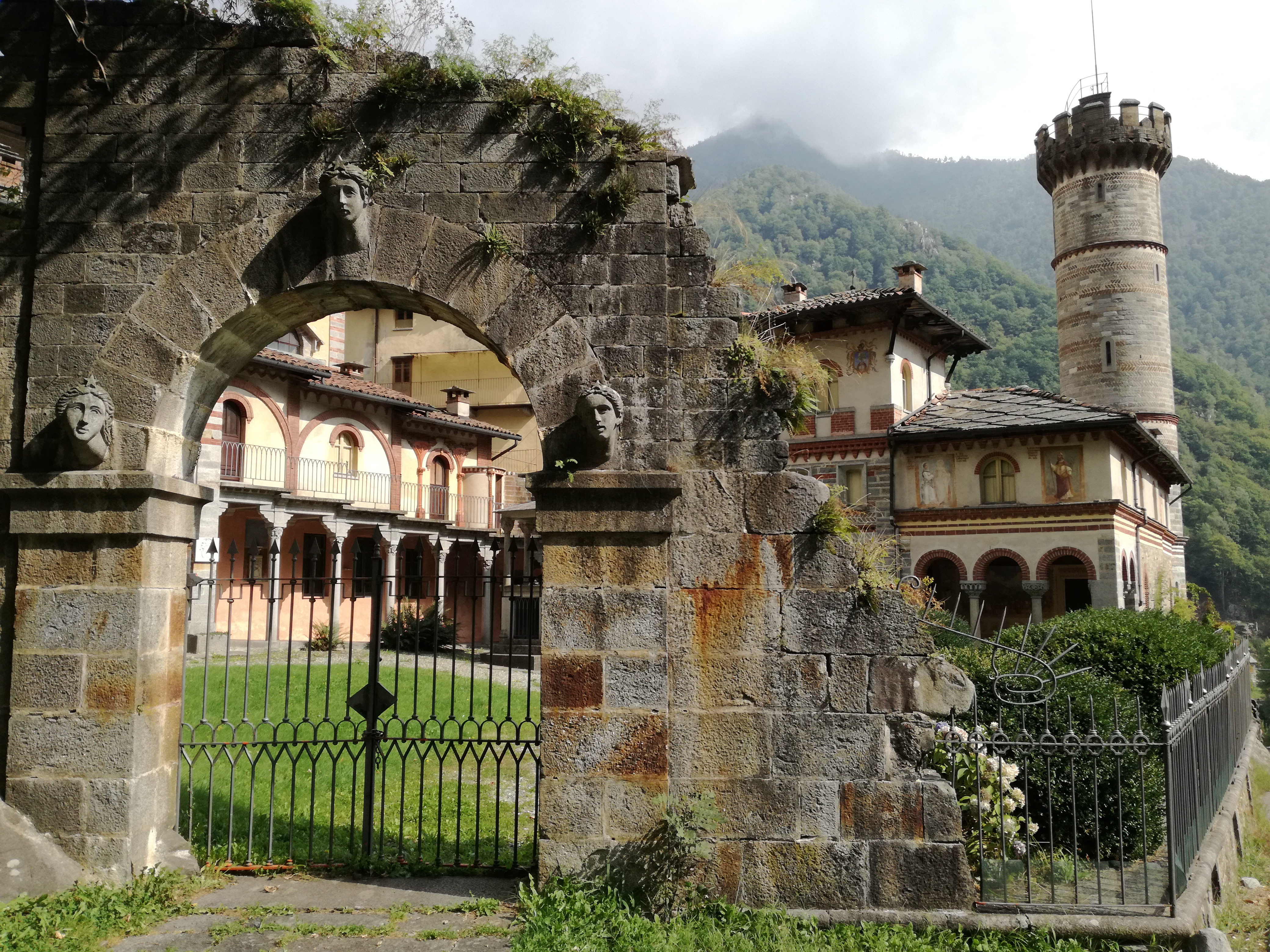
To try to understand the connections between Freemasonry and Spiritism, it is first of all necessary to define, in a nutshell, what is meant by Spiritism, a philosophical movement with a strong religious connotation. Its central node is a of the highest ambitions, always closed to man: understand what is "on the other side". In the second half of the nineteenth century positivism was rampant, a philosophical movement of profound faith in the possibilities of science, and therefore also this last, unfathomable frontier had to be demolished: the efforts of the spiritualists merged with those of other researchers of the unusual, such as hypnotists, mesmerists and magnetists, giving rise to a rather strong current of thought. Of course, the ambition to lift the veil to see beyond death was much older: already in the classical world, since the time of Homer, there was talk of "necromancy”, The art of divining the future by conversing with the dead, a discipline that had mixed fortunes even in the Middle Ages and the Renaissance, but from the mid-800th century this magical curiosity married with science, acquiring a new vigor.
At the same time as the events of Rosazza, the Americans Fox sisters - Kate, Leah and Margaret - held public séances first in New York and then on tour in the United States and Europe. A large audience attended these evenings, made up not only of hundreds of simpletons, but also of prominent personalities: intellectuals of the caliber of Arthur Conan Doyle, and even the philosopher Arthur Schopenhauer, for example, they had a strong interest in this discipline. During these public "experiments", the sisters evoked spirits that manifested themselves with the so-called "raps", sudden beats, with the automatic writing or again with spirit lights or with objects that moved at a distance. In more recent times, the famous Gustavo Rol (1903-1994) practiced “shows” of this kind in his Turin home.
The sessions of the Fox sisters certainly had a spectacular and entertaining character, but they also represented a deep spiritual and religious need: Spiritism first became a consolidated movement and then even a Church, in relation to the Christian sect of the Quakers. For the record, it is also necessary to report the epilogue of the story of the Fox sisters: along with popularity, the three mediums also developed a growing passion for alcohol, which progressively brought them out of favor. In 1888, overburdened by debts, the three mediums revealed, for remuneration in money, that their communications with the other world were the result of tricks. In particular, the "raps", the blows that were felt during the séances were nothing more than the snapping of the joints of Margaret's toes, transformed into signals from the afterlife by the suggestion of the public.
In spite of these - and other - "small" style lapses, it is estimated that in 1870 there were about 10 million spiritualists in the United States, but also overseas, in old Europe, the movement had a notable fortune thanks to the theoretical formulation of the French pedagogue and philosopher Allan Kardec, born Hippolyte Léon Denizard Rivail. He systematized the use of séances to outline a real catechism, the Book of Spirits, in the course of which the spirits were asked questions of all kinds, from the nature of God to correct human conduct. The corpus of these writings has a strong Christian imprint, free from Catholic dogmatism and extremely syncretistic, to the point of admitting the reincarnation of souls.

Also in Italy at the time there were more than a hundred spirit circles: one of these, named Atea, was even chaired by the Grand Master Giuseppe Garibaldi. In Turin, Vincenzo Scarpa, secretary of Cavour, with the pseudonym of Nicephorus Filalete published the magazine Annals of Spiritism and he often and willingly asked for funding from Rosazza. Still under the Mole, a recalcitrant at first Cesare Lombroso, now considered the father of criminal anthropology, he converted to the doctrine after attending a performance by the Neapolitan medium Eusapia Palladino. In November 1900, we even see him take on the role of the supernatural investigator and solve a case of poltergeist in an inn on Via Bava. In short, Spiritism "was in vogue", and it is not too surprising that even people who were anything but inexperienced, like Federico Rosazza, were infatuated with it.
The originality of Rosazza's case lies, perhaps, in the use of spiritism for architectural purposes. Even in this situation, however, there are at least two similar cases. The first is represented by Gabriele d'Annunzio - also a Mason, among other things - who got help from a medium to conceive and design his own Vittoriale. The second case, on the other hand, is that of Sarah Winchester (1839 - 1922), widow of the famous gunsmith. Her story about her is in some respects similar to that of Federico Rosazza: following the painful loss of her husband and daughter, she too turned to spiritic architecture to sublimate mourning. Using mediumistic sessions, she built a labyrinthine and absurd house for the rest of her life, consisting of over 160 rooms on seven floors.
If this were a detective novel and we were detectives unwilling to accept supernatural hypotheses, we would find ourselves having to find a less earthly and materialistic explanation for the "voices from beyond" that dictated the topography of this wonderful town. Well, in this case we could assume that the "guilty" was one of the main protagonists of this story, as in the best novels of Agatha Christie, and we could orient our suspicions on Giuseppe Maffei. In fact, in addition to being the main architect of the séances, he was also the greatest beneficiary of the works, as he was paid by Frederick to follow and develop them. Behind the spirits of the afterlife and the transcendent messages could therefore hide a much more earthly interest. But now the curtain of time has fallen on this story, and probably - as often happens in most human affairs - we will never be given the opportunity to discover the truth.
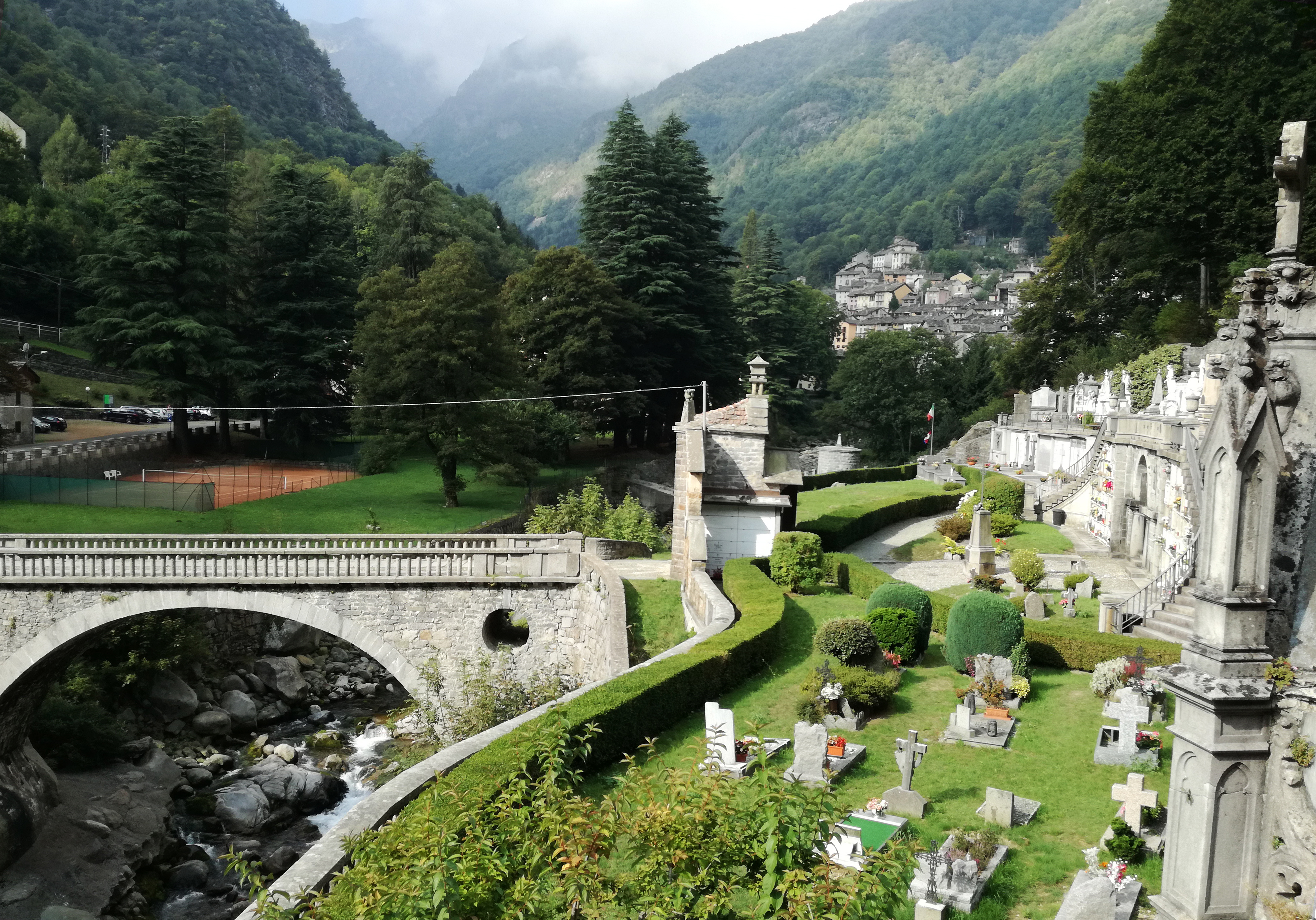
Having made these premises on the phenomenon of Spiritism, it is easier to understand the connection with Freemasonry. Even Freemasonry, in fact, was at that time at its historical maximum in Italy: in the aftermath of the Unification of Italy in 1861, strongly desired by Piedmontese freemasons, there were many Freemasons inside the Parliament. Freemasonry and Spiritism had a common enemy: the Holy Roman Church of Pius IX, which, in that particular historical moment, seemed to waver and be on the verge of falling. This undoubtedly contributed to creating a sense of closeness between the two movements.
Not only that: both Freemasonry and Spiritism were proponents of a new spiritual approach, free from dogmatism and of a syncretic type, ready to welcome influences from the most disparate sources. Both were thirsty for mystery and transcendence, but reluctant to submit to ecclesiastical dictates. Freemasonry can be compared to a river, within which very different traditions converge, such as Templarism, Ancient Egypt and Jewish gnosis: for Spiritism the same desire to relate to remote and fascinating traditions applies. Finally, the Masons themselves were often spiritualists, and vice versa: this is precisely the case of Federico Rosazza and Giuseppe Maffei, but they were certainly not the only ones, starting from Franz Anton Mesmer, the discoverer of the so-called "Animal fluid", to get to the aforementioned examples of Garibaldi or Scarpa, but the list would be much longer. The confluence of these factors allows us to better contextualize the cultural climate of the time, and to understand a combination that today would appear decidedly unacceptable: ideas have a history and, just like living beings, evolve over time.
Let us now abandon Spiritism to talk about the second current of thought mentioned at the beginning, Freemasonry. It would be impossible to reconstruct its history in its entirety here: let us therefore limit ourselves to a superficial historical framework. Usually, the 1717 as the date of an upheaval against the operative part, which is centuries old. At that age Freemasonry was on the way to becoming speculative under the pressure of the Enlightenment. This sort of revolution originated from four inoperative lodges that joined together giving life to the Grand Lodge of England. In fact, the historical references tell us that the origin of the Order is much older, and dates back to an immemorial time and in any case long before the construction of the cathedrals and the guilds of medieval builders. It is from this semantic heritage, in fact, that many of the symbols that continue to be present in the Freemasonry: from the well known square and compass to aprons, passing through lesser known symbols such as the trowel and the plumb line.
The town of Rosazza is very rich in this type of symbolism and allows those who know where to look, a real "Hunt for the symbol", a stimulating and, at the same time, fun intellectual experience. Here, we will not give all the symbolic references, but only some guidelines, precisely to leave visitors the pleasure of autonomous and free discovery. As an ancient Pythagorean proverb says, "quaerendo invenietis", Looking for you will find ...
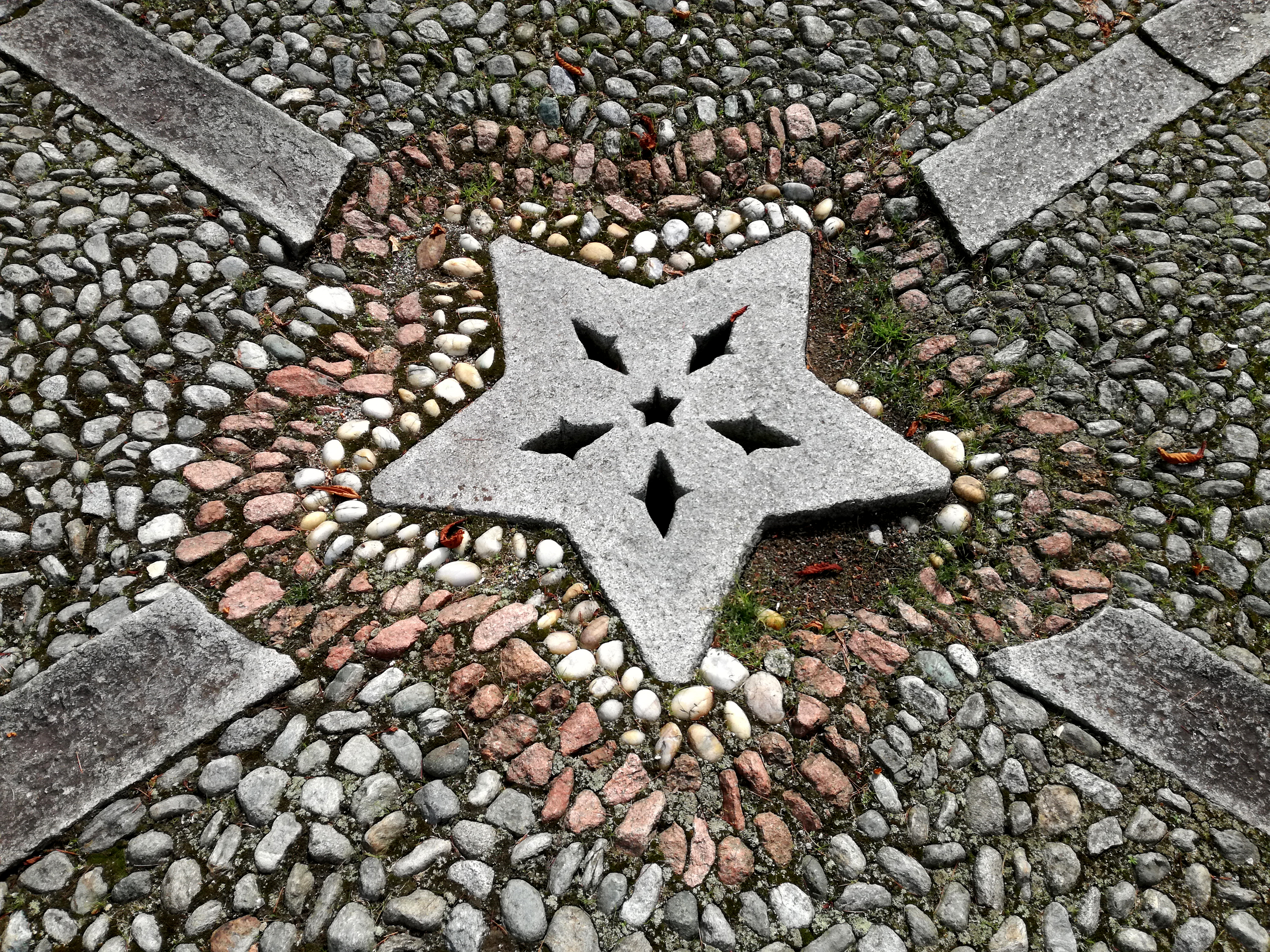
Stars and Roses
Strolling through the city, the symbols you come across most frequently are undoubtedly the stars and roses. The coat of arms of the Rosazza family was composed of a rose with three stars, and this partly explains the reason for these frequent decorations. But it is not a question of simple and pure narcissism: the star, in fact, symbolizes the Pythagorean Pentalpha, the knowledge towards which all initiates are oriented. The message is particularly explicit in the so-called "Fountain of the Star", on which a cartouche stands out: "She was lost in creation / now he guides me / Federico Rosazza". To be dispersed in creation was knowledge, which later became a guiding element, a true north star for the initiate.
Also the Rose it has a profound symbolic value, and is generally used to indicate love, both profane and transcendent. The most immediate reference, in this case, is to the Brotherhood of the Rosicrucians, a legendary and mysterious secret order, whose existence was revealed by some pamphlets that appeared in Germany at the beginning of the seventeenth century. In Freemasonry, traces of this tradition remain in the Scottish Rite, the eighteenth degree of which is precisely dedicated to the Knight of the Rose and the Cross. As such, the image of him is colored with multiple meanings: esoteric, mystical, religious, popular. Reproduced on sarcophagi and slabs; as an ornamental motif in architecture; on fabrics and carpets; in heraldry, on shields and blazons; in jewelry, engraved or embossed; in painting and sculpture; up to the copious production that sees her protagonist in works of literature and poetry.
Its symbolism is equivalent to the lotus flower: we could say that the Rose seems to embody, in the collective imagination, the flower par excellence as an icon symbolic and graceful of all flowers which, moreover, have one characteristic in common, namely being similar to a cup, to a container and, due to their formal characteristic, related to thefemale aspect of receptacle and generation. The very number of petals in the wild rose is five, a number that the Pythagoreans called nuptial or nuptial the union between the two masculine and the three feminine. As such, under the more general symbolic aspect, it would represent the unfolding of the manifestation around its center. It should be remembered that in the representation of the five-petaled rose it can be recognized the pentalpha inscribed in the pentagon base whose diagonals form precisely this geometric construction. This would have a special relationship with the Golden proportion since all the polygonal spaces formed by the diagonals are marked by the golden proportion in which the Vitruvian man is inscribed who, metaphysically, becomes a symbol of the Primordial Man. Between legend and history, the Rose contains, in its mysterious aspect, from time to time the myth of birth and rebirth.

The church square
If we were to identify a symbolic epicenter in Rosazza, this would be the church and the spaces that surround it. In the churchyard, in particular, you will find twelve dendriform stones, that is, from the shape of a tree. These sculptures, valuable examples of the local mastery in working the stone, symbolically represent a forest, la "dark forest" in which the layman gropes before being initiated and to be able to access the "sacred", symbolized in this case by the church. It goes without saying that the number twelve has a symbolic meaning. The number 12 indicates the recomposition of the original totality. In other words, it indicates the descent to earth of a cosmic model of fullness and harmony. In fact, the meaning of the number twelve indicates the conclusion of a completed cycle, the creation, the months of the year, the apostles. The 12 is the symbol of the fundamental initiatory test. According to the Platonic polyhedra that we find in Plato's Timaeus the dodecahedron, that is, the solid with twelve faces would represent the completeness of the universe.
But that is not all: the flooring, made with black and white pebbles, represents a bush devoid of flowers while in a subsequent tile, the same bush, this time in bloom. The two panels are interspersed with a five-step ladder. The scale is a Masonic symbol that indicates progression, transformation and evolution. In this case, the transition from brambles to flowering fronds indicates an individual evolution, the passage "beyond" or, perhaps, the possibility of a life beyond death. The composition also refers to the family motto of Federico Rosazza. Again: on the colonnade which, to the right of the facade of the church, leads to the so-called "Via Pulchra", among the statues of Rosazza and Maffei, you will also find that of a stonemason intent on squaring a rough stone: on the one hand, it is a tribute to the flourishing local tradition of stone processing, on the other, however, it is also a clear reference to the free masonry tradition which was mentioned earlier. At the beginning of the street in the apse area on the red colonnade crowning the upper part of the apse, the figure in the fresco by Maffei peeps with the archipenzolo in his hand in the company of a priest and probably in the nearby frame much damaged by the bad weather the figure of the Rosazza.

The interior of the church
The most notable element of the structure is undoubtedly the magnificent starry sky, painted by Giuseppe Maffei in a realistic way, so as to be able to identify the constellations. The reference is, undoubtedly, to the starry vault present in Masonic temples. In the back of the apse stands the southern cross, constellation that lies on the southern milky way whose characteristic is the alignment in the form of a Latin cross. Dante in the first canto of the purgatory describe the constellation of the Southern Cross, in the two famous triplets (verses 22-27):
'I turned to my right hand, and can lie
to the other pole, and I saw four stars
never seen except for the first people.
Goder seemed the sky of their flames:
oh settentrional widower site,
then what a private it is to look at those! "
The four stars, in the symbolic meaning, are charged with the value of the four cardinal virtues: justice, fortitude, prudence and temperance. In addition to this, you will also find columns on which intertwining ropes have been carved, reminiscent of the so-called "Lakes of love", a sort of Savoy knot, also present in Masonic temples to symbolize brotherhood.
Beyond these initiatory elements, the church has some ironic aspects. For example, in the epigraph at the entrance, Rosazza took care to specify that it had been built "redempta Italy”, Or rather for redeemed Italy: the reference is, clearly, to September 20 and the breach of Porta Pia, a historical event that is very rarely celebrated by Christian architecture. In the same epigraph, the church is not defined "ecclesiam", As usual, but rather"templum”, A term that, once again, unequivocally refers us to the Masonic sphere.
Furthermore, when designing the church, Rosazza and Maffei wanted a door on the right aisle, an element strongly opposed by the parish priest as it would have allowed the faithful to go out during the sermon. As if that were not enough, three imposing urinals were built right in front of the church, along the so-called Via Pulchra ... It is no wonder that the Bishop refused to attend the inauguration of the church!
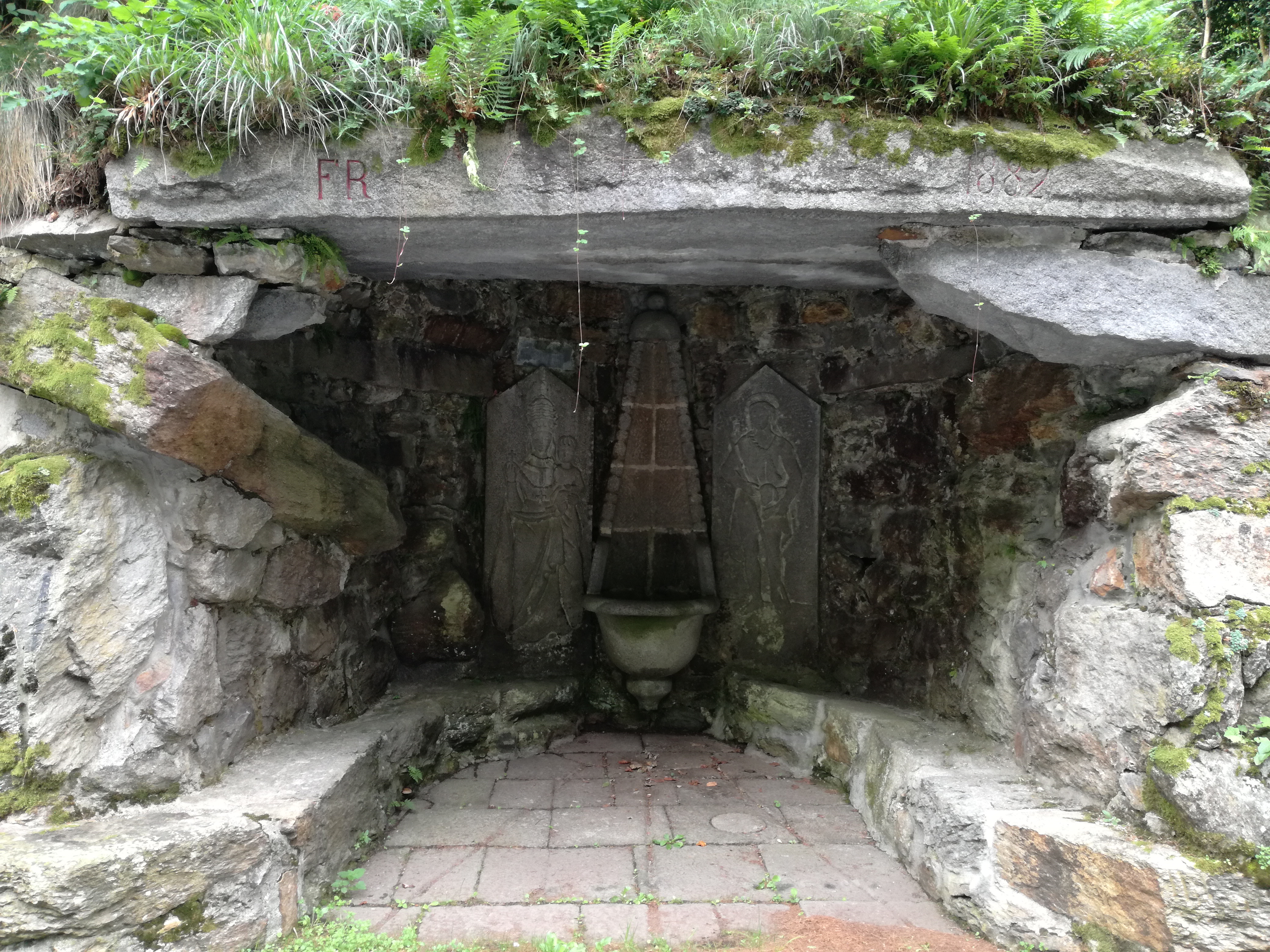
The talking fountains and the Via Pulchra
The town is dotted with fountains, which testify to an impressive effort made by the administration of Rosazza to improve the town's water network. In 1872 Federico Rosazza had a hydraulic company of great public utility built by distributing water throughout the country through a network of cast iron pipes from the reservoir above the Campopiano. The populace called such "talking" fountains, since all the fountains of a certain importance have a cartouche on which moralizing phrases are written or tell a story. The fountains scattered throughout the town are all different from each other but always marked with the same symbols, the rose and the five-point star.
Next to the new church stands out the Fountain of Faith with the statue of the first of the three theological virtues, some beautiful roses and a bas-relief at the base with Adam with his head crowned with acacia leaves (male element) and Eve with a rose on his head (female element). Inside the fountain three Masonic dots in relief hidden by the water, just for those who want to discover them. The sentence "quemadmodum Desiderat cervus ad fontes aquarum - ita Desiderat - anima mea ad te Deus”, Which, according to the Psalms of David, means "As the deer aspires / desires the spring of water, so my soul sighs for you, my God". In addition to the fountain of faith where in the basin there are the three points that distinguish the order of freemasons, on another, as already said, the pentalpha, on yet another a rose, in a dense network of symbolic references.
Entering the town, for example, you come across the fountain known as the Balmacce, dedicated to San Giovanni Battista and the Black Madonna of Oropa. It is well known that the two San Giovanni (Evangelist and Baptist) are an important reference for Freemasonry, because they are the patrons of the two solstices, but if you have any doubts about it, move the dry leaves that cover the base of the fountain with your foot: you will find yourself, carved in stone, a pomegranate, a symbol of brotherhood.
In the passage behind the church, merged with the rectory, there is the via pulcra or the way of knowledge at the end of which there is a portico that gives access to the square. In this street a large five-point star stands out in an arch and one on the nearby wall levoogiro swastika, a solar symbol, dear to many traditions, especially of oriental origin. But the symbols do not end here, on the pediment that leads into the portico, a all-seeing eye between the dates of the renovation This street, defined as “beautiful” due to the richness of the stone decorations that adorn it, leads to the Church. Walking along this street you will notice the particular slit windows of the church, which bring to mind the tree of Life.

The bridge
From a symbolic point of view, the bridge has always represented the archetype of the passage beyond. In all civilizations, in its architectural form, the bridge has performed the action of connection between two opposite banks, between two mountains, between two worlds. It has crossed impetuous rivers, dangerous ravines, steep valleys, roads. From a metaphysical point of view (and here we will rely on the Hindu Vedanta) it represents, through the doctrine of Sùtratma, a bond that in the symbolic aspect represents the union of two different states of being. Trying to simplify as much as possible (unfortunately for problems of length) the two banks represent, in the most general sense, the sky and the earth and the bridge is the axial pillar that crosses them without joining them. From a metaphysical point of view, the one who, symbolically, crosses the bridge is the one who, starting from the state of manifestation in which he finds himself, reaches, having the possibilities, the principial state. Five-pointed stars are still recurrent on the parapets, while on the cobbled path of the bridge, 13 circles interspersed with others of different colors are traced with white stones.
Who designed it wanted to indicate a specific meaning that is explained to us by numerological science. The 13 symbolically represents the Alchemist and is closely related to the universe of senses and forms. It contains within itself the principle of the inevitability of change. The meaning of this concept is a warning not to cling to what supports the manifestation being everything in eternal change. It is the number of breaking a balance and the beginning of a new and unknown process. The number 13, therefore, represents material death which in alchemy is characterized by the process of nigredo that precedes the rebirth. Finally, the thirteen refers to the twelve apostles with Jesus, therefore it refers to knowledge mediated by sharing, moreover it is linked to the blessed virgin or to Madonna Knowledge. The thirteen rounds on the pavement of the bridge mark the path of the deceased who approaches his final resting place but also towards a new path in another event.

The cemetery
Connected to the town by the three-arched bridge, the cemetery is also a point full of symbolism. The hourglasses found on the heads of the bridge shoulders have a precise meaning that is not only that of the passage of time (Time flies). This symbol has always been highly appreciated by ancient alchemists: the upper half of the hourglass represents the sky, while the lower half indicates the Earth. IS symbol of uninterrupted progress and the flow of time: a cyclical flow, a fall to get up, a barter of counter actions and the like ... in eternal movement. Once the grain has passed to the lower floor or in the manifestation it returns, overturning the hourglass, to re-manifest itself, in another symbol it appears as theOuroboros. The being passes between the two polarities giving the feeling of balance being a participant in both. The hourglass element then recurs on the beautiful carved wooden portal, on which we see it as an element interspersed with the lower dry branch of roses with the living and flowery one. With this symbol the aspect of rebirth given by the dry brambles at the base and the new life flourished in the upper part in the middle of which the hourglass typical of Freemasonry is highlighted as a means of resurrection. The wings represent divine mercy, or the concept that time is divine and therefore should not be wasted but used wisely.
Inside the cemetery there are, confused among others, some Masonic tombs; but the point that arouses the greatest interest is undoubtedly the center, where we find a stone bier for the coffin, surrounded by tears of white stone, seven to be exact and which are present once again in the Masonic rite of the third degree. To an external approach, tears can represent the sentimental aspect that characterizes the feet of those who remain but at a higher level tears can be thought of as rain and dew which represent the benign descent aspect of spiritual influence: a concept also borrowed from the freemasonry tradition which is present however in different traditions in fact, those who consider death as a hiatus what it happens later, it is the resurrection or initiatically the new life.
In short, the town of Rosazza is certainly a place full of charm and mystery: walking through its streets is an unmissable experience for anyone interested in Tradition.
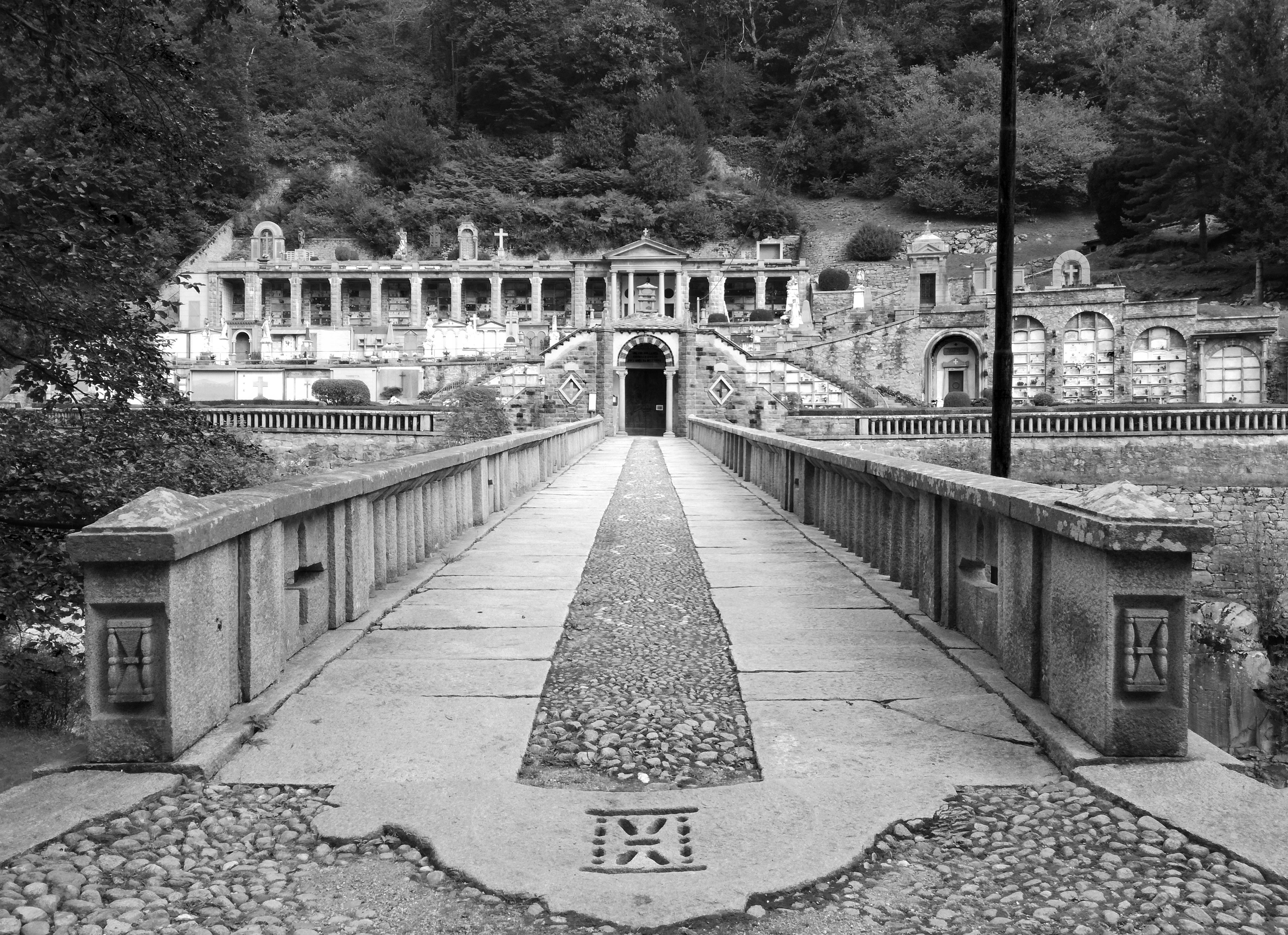
Bibliographical references:
- Bessone Angelo S. Sergio Trivero, The secret of the rose. A church between spiritism and freemasonry, DOCBI Biellesi Study Center editions, 2001
- Pier Luigi Baima Bollone, Science in the spirit world, SEI Editions

A comment on "Rosazza (BI): a stone jewel between freemasonry and spiritism"